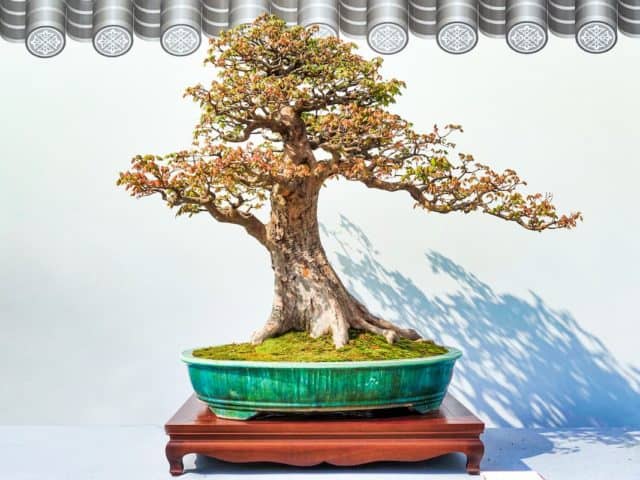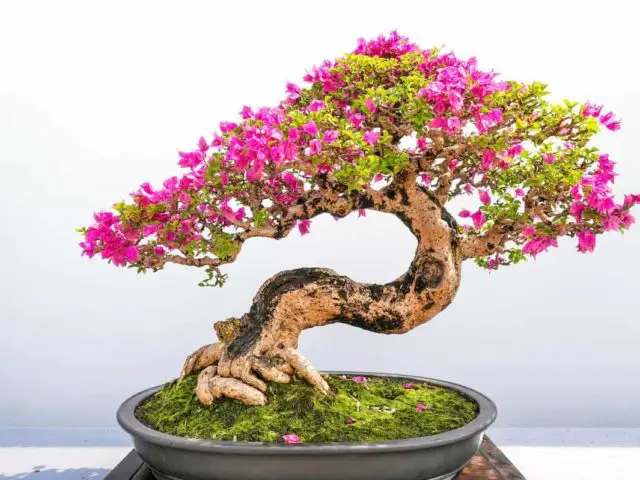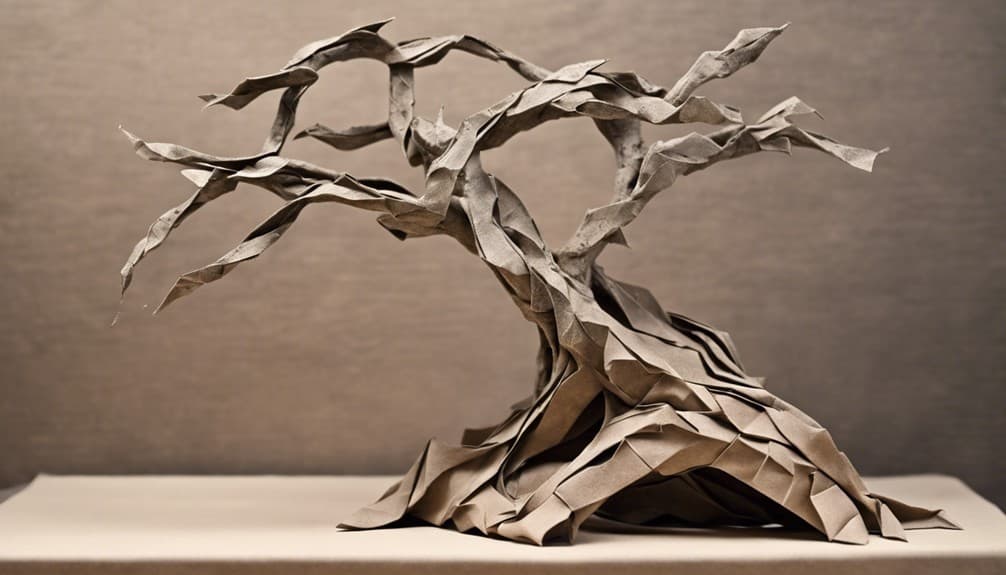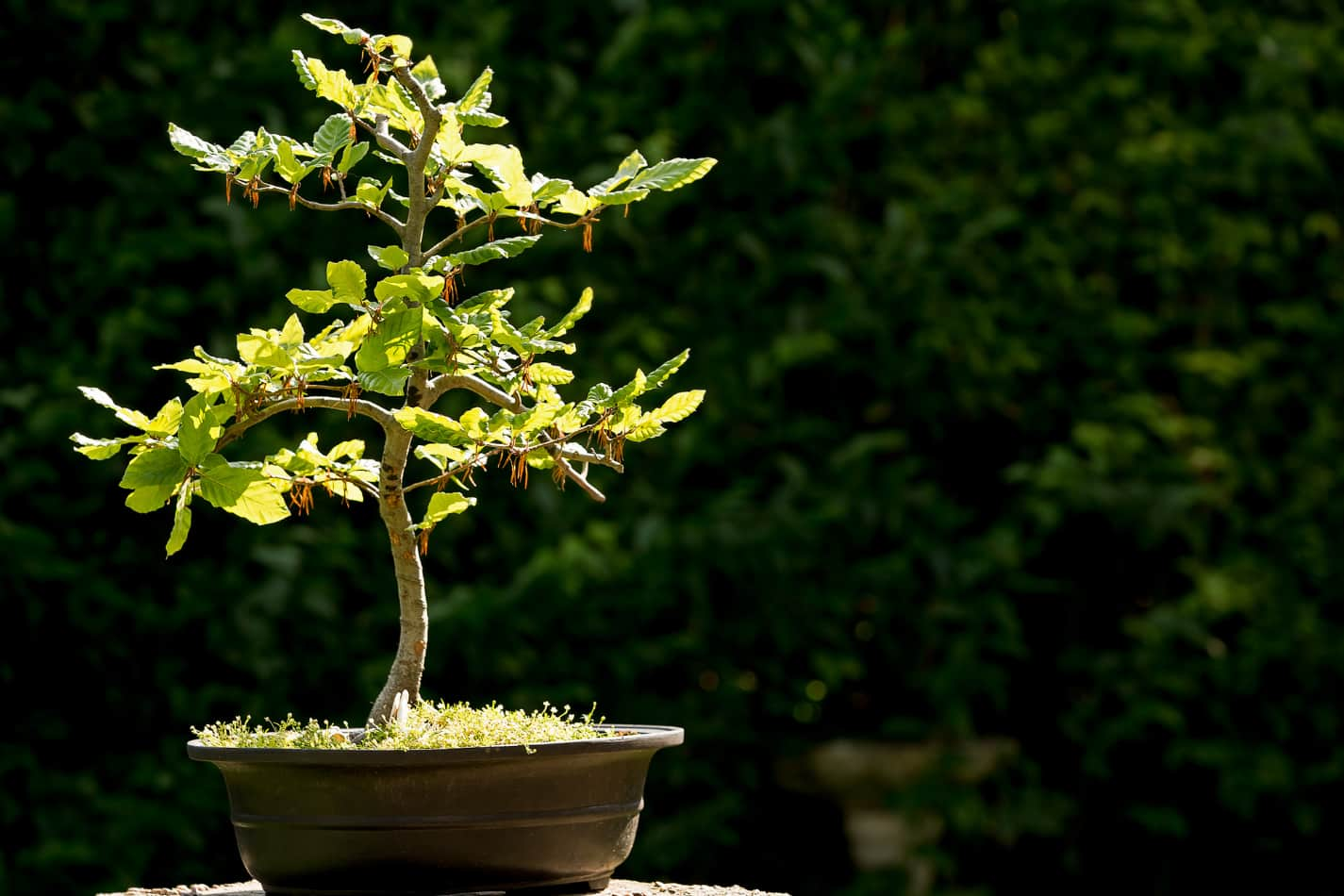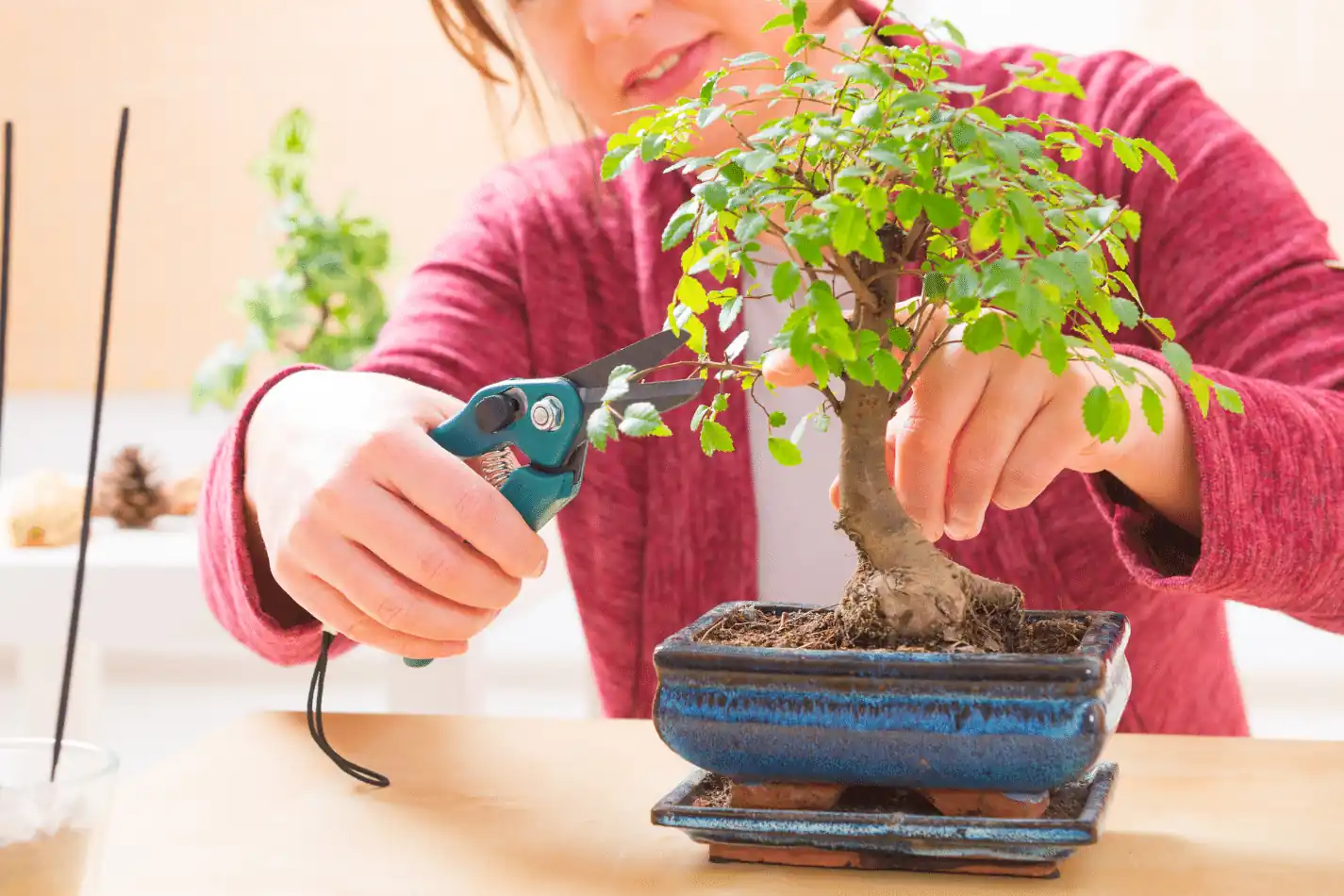Bonsai is the art of creating miniature plants in pots. The art of bonsai started to become popular in the 18th century. While many people may not know it, the actual mechanism behind keeping them diminutive lies in the soil.
You can’t gather garden soil, put it in a container, and plant the tree in it. There’s quite a bit of labor and expertise goes into it so lets take a look at how to make bonsai soil at home.
While there isn’t any clear-cut soil “recipe” for bonsai soil each bonsai tree has specific needs and techniques for its soil preparation. Typically this involves a mixture of pumice, lava rock, and akadama at the correct proportions. Sometimes though organic compost is used as well as a mixing material.
Before your first attempt to make a bonsai, you must know how to make bonsai soil at home, the components of the soil, the criteria of each, which does what, and some basic instructions.
Here in this article, I am going to discuss every one of those points in depth. By the time you have finished this article, you will be nothing less than a bona fide bonsai artist.
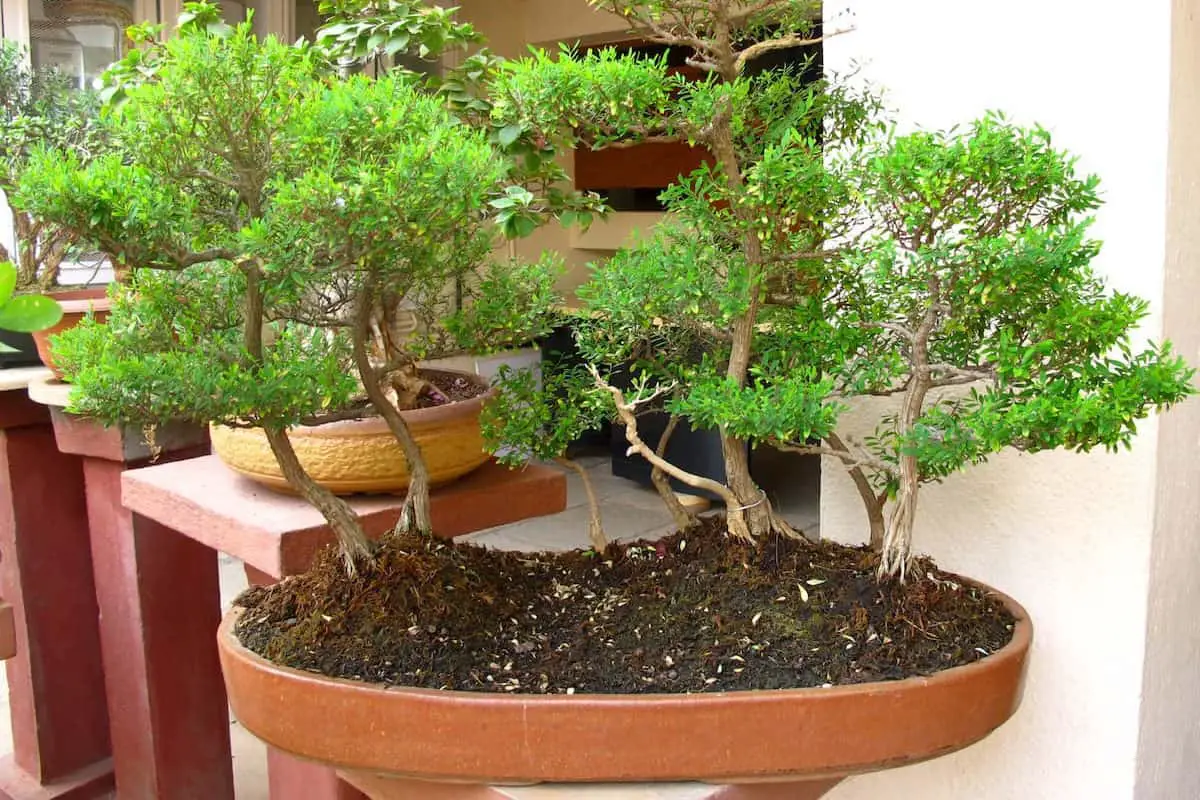
Criteria of Proper Bonsai Soil
The main reason that normal garden soil cannot be used is that for growing bonsai the soil needs to work a bit differently. Bonsai soil is granular and less organic, leaving air pockets in between particles.
There are three main criteria two of which sound the complete opposite of each other. But both of them are strictly required.
What the criteria are and why they are essential should be known by any bonsai enthusiast? Below, I am going to explain each of the criteria’s:
Water Retention
Bonsai requires a consistent water supply. So, the soil needs to retain enough water to stay hydrated between watering. But there’s a downside to it.
The soil needs to retain just enough water to stay hydrated. Any excess water shall result in damaging the tree. This is the reason why garden soil can’t be used because they retain too much water.
Without adequate the water is drained quickly and the soil becomes dry. The bonsai will be deprived of moisture in between watering.
Water Drainage
Too much water retention is harmful to almost anything. Natural garden soil retains too much water before draining it through the holes in the pot. Also, if the water is retained in the air pockets, the tree will not be able to get enough oxygen.
Plus, the root will rot and the tree will die. So along with water retention, proper drainage is also required. If there is no proper drainage then excess water will rot the root and kill the bonsai.
Air Incorporation Into the Soil (Proper Aeration)
Just like any other living being, the bonsai needs oxygen too. Especially the roots require oxygen to grow. As bonsai are kept inside the house, there isn’t enough natural oxygen.
If the soils are tightly packed, air won’t be able to enter and deliver oxygen. That’s why gravel like substances are used in the soil. This ensures aeration for the roots which ensure optimal growth.
What Do You Need for Making Bonsai Soil?
Bonsai soil isn’t just plain old soil. Rather than natural soil, they are actually a mixture of a few organic and inorganic components. In the mix, mostly inorganic substances are used because organic components have less drainage capability. Also, they have a high deterioration rate.
Water drainage, retention, and aeration can be easily achieved by selective use of inorganic components. Organic components are used as well. This is required for nutrients and an essential microbe for the roots. So, we will divide the components into two categories and discuss them accordingly.
Organic
Various organic components can be used for the same purposes. Peat moss, berk of conifer trees, and some regular potting soil.
Moss
The main purpose of using organic materials is holding the inorganic components together and moss does an excellent job at that.
If the inorganic materials are not held together, they can hamper the growth of the root.
But beware that moss is really good at water retention. It can damage your tree in the long term.
Conifer berk
Conifer berk is also really good at mixing the soil together. It makes the soil bulky and allows water retention. The best part is that it is also great at water draining. So, you won’t have to worry about the roots getting rot.
Garden potting soil and decomposing component
Potting soil is mainly used to bond the other organic components together as well as inorganic materials. But potting soil has high water retention properties.
It can displace the oxygen and inhibit the activities of Mycorrhiza, a bacterium essential for processing foods and nutrients for photosynthesis.
Decomposing materials are mainly used as a source of nutrients. As they are organic, they are full of nutrients and act as feed to the roots.
Inorganic
Inorganic materials are bread and butters of bonsai. They possess all the properties of ideal bonsai soil and facilitate healthy growth.
Here I am going to mention and explain each of the components so that you know what you are supposed to do, and what you are not.
Akadama
Akadama is the most widely used and most popular component of bonsai soil. It is of Japanese origin, the same as bonsai. It is a clay-like substance that is fired or hard-baked till it becomes strong enough.
The components of bonsai soil need to be large granular, so after purchasing akadama, it is recommended by many bonsai specialists to strain it so that there are no small particles.
Akadama is used for the sole purpose of water retention. Remember that it has no draining capability. So, using a good draining material along with it is always advised.
Also, after a few years of use, akadama tends to break down into smaller particles. Thus, blocking drainage completely. So periodic repotting is advised.
Pumice
Pumice is a volcanic component. It is ejected from the volcano at high temperature and pressure and then rapidly cooled and decompressed due to the outside environment. It is a highly porous structure. So, it can hold large quantities of water. Pumice is used for water retention purposes as well.
Another purpose of pumice is the growth of the roots. Although pumice is highly porous, the pores are too small for the roots to penetrate. Roots grow their branches around the pores and later the pumice particles break down into smaller pieces.
Pumice also holds the components together and has some draining properties. It has less retention capacity and more draining capability than akadama. So, it is used for both purposes, but mainly as a catalyst for akadama.
Lava rock
Lava rock, as you have already assumed, derives from the lava of volcanic eruptions. It is one of those components that serve all three purposes.
It is porous and has good water retention properties, but also drains water quickly. It leaves a gap between two particles so aeration is also good.
It has two major advantages over akadama and pumice; it doesn’t break down easily and can be reused. However, it is mostly used for water retention, and secondly for aeration.
Turface
Turface is high fired clay and it has great aeration and drainage properties. It is used in cricket fields, golf courses, football fields, etc. due to its excellent draining.
When used as a bonsai substrate, they provide good aeration and drainage.
Grit/gravel/river sand
Grit or gravel, whatever you call it; these are just small stones. They are mainly used for aeration and drainage as they have little water retention properties.
In the early days, grits were invariably used for aeration and drainage purposes. But nowadays, materials like lava rock, pumice, etc. fulfill all the criteria so grits are hardly used.
Diatomite
Also known as diatomaceous earth or oil sorb, it is an alternative. It is not considered a key component of bonsai soil. Diatomite is good at soaking up water so it can be used as water retention material.
How Can You Make Bonsai Soil at Home?
Now that you know what you need and why you need, it’s time to get your hands dirty, literally! There are individual recipes for specific bonsai but here I am going to mention two main types of bonsai and a basic bonsai mix for the third. I will mention the ratios for each and the overall procedures of mixing.
Back in the day, various materials were used. But now mostly akadama, pumice, and lava rock are used as they serve all the purposes when mixed correctly at the right ratio.
The two tree types I’m going to mention are conifers and deciduous trees.
| Components | Deciduous trees | Conifer trees | basic |
| Lava rock | 25% | 33% | 25% |
| akadama | 50% | 33% | 50% |
| Organic compost/pumice | 25% | 33% | 25% |
To make it easy to remember, for conifer trees use 1:1:1 ratio, for other trees including deciduous use 1:2:1.
And now for the mixing procedure:
Step 1:
First, prepare the akadama. Medium-sized granules are recommended because they are easy to screen. Akadama can be extremely pricey so be sure to check your sources. If someone is offering you dirt cheap akadama, know that something is wrong.
Step 2:
Other than pumice or similar components, everything must be screened properly. It is recommended to use a different strainer of the varying mesh size. First, screen the akadama and separate the material that remains. Next screen all the materials that fell through and keep what remains.
This will make sure the soil is free from any small particles that might hamper proper aeration.
Step 3:
Next, we take lava rock. They tend to be dusty, so screen them as well. Screening it only once will do.
Step 4:
If the ratios are correct, you can just mix all of them together. I recommend adding pumice to akadama first, then lava rock. Remember some organic components I talked about above? Now it’s time to use them. If the bonsai requires more water retention, you can add some organic soil. But make sure to add it last.
Step 5:
After adding the bonsai, don’t forget to water it. That’s it!
Organic vs. Inorganic Soil: The ‘Must Know’ Fact
Organic means having any living component in it. Normal garden soil is organic as it has materials from dead animals, plants, fossils from thousands of years ago.
Organic soil is best for any plants but bonsais are exceptional. Using inorganic materials is highly recommended for bonsai plants and there are good reasons.
Organic materials are full of nutrients and plants grow fast. But in case of bonsai, we want the opposite. We are limiting its growth so we want the growth to be slow and steady up to a certain point.
This goal cannot be achieved by using organic soils. They contain all sorts of living materials that work the exact opposite of what we want.
The main reason that organic components are ill-advised is that they are brittle. They break down easily over time. As they break down into smaller particles, the drainage also reduces.
Proper drainage is very important for bonsai trees because retained water will cause the root to rot, thus killing the plant.
No organic matter decays at the same rate. Various matter decay at different times so it’s hard to determine at which point the plant has started to suffer due to decaying.
Also, you cannot readily change soil components as some repotting is harmful to some bonsai.
The worst part about organic materials is that even if you somehow manage to drain the excess water, once the soil becomes too dry, it’s hard to wet them again. They start to repel water once they are dried too much.
The reason why inorganic materials are recommended for bonsais is that they possess all the criteria for growing bonsai. They retain just enough water and drain the rest.
Also, they allow the incorporation of air and oxygen for root growth. That’s the reason that initially organic soils were used as substrate but not anymore.
Common Mistakes When Growing Bonsai
There are a few mistakes that you must avoid when preparing the substrate for bonsai. These mistakes are fatal for bonsai and kill them quickly. Here are some of those:
Using Too Much Water-Retentive Materials
Water is both essential and deadly for bonsai. As we have discussed above, bonsai soils must have the ability to drain excess waters. You may not be able to water your bonsai at the same time every day.
That’s why it needs to retain water to get moisture in the meantime. Water is super important for photosynthesis and other vital functions.
If the material you are using retains too much water, more than the required amount, it has the opposite effect. It can even kill the plant in a short time.
The excess water in the root area will cause the roots to rot. Furthermore, the water will displace the oxygen surrounding the roots.
Oxygen is very important for root growth and without it, the bonsai is likely to die.
Using Too Much Water Draining Materials
Water drainage is equally important. As we have discussed above, the excess water harms the root.
But if the substrate is draining the water too quickly, or too much water at a time, the bonsai will not get enough water for photosynthesis.
As it’s a houseplant, it won’t be able to get water from the soil. Excessive drainage can kill bonsai without you even knowing it.
Using Faulty Soils
Proper substrates must be used for growing bonsai properly. Regular garden soil won’t do any good because they are organic and densely packed, excess water can’t be drained.
So, you must find soils that have both retaining and draining property. Also, a symbiotic relation between fungi mycorrhiza and bonsai is important for its growth.
Proper soil substrate is needed to maintain that symbiotic relation. So, make sure you know your soil.
Not Using Artificial Feeding
Bonsai soil is confined in the pot and the roots have nowhere to go. So, it’s your job to water them regularly as well as giving artificial food. Nitrogen, phosphorus, and potassium are necessary for proper growth.
Nitrogen helps to grow the branches while phosphorus facilitates root growth. Potassium is required for other functions.
The soil you are using does not have these elements in enough amounts. So, to ensure their proper growth, these three elements need to be given at the correct ratio.
Note that the ratio varies according to species and time of the year. Do not use artificial food for repotted or sick bonsai.
Not Enough Aeration
We all learned from our biology class that trees use carbon dioxide from the air for photosynthesis and produce oxygen that we breathe. Many may not know that oxygen is also important for bonsai.
The root portion especially needs oxygen for its growth. Optimum root health is necessary for the growth of any trees.
Soils used in bonsai pots lack oxygen as they are confined. So, make sure the materials that are used have air pockets in between them.
Oxygen in the air will be used by the roots for growth. Some materials break down easily and prevent aeration. Make sure you keep an eye on these things.
Final Thoughts on How to Make Bonsai Soil at Home
Hopefully you are now more prepared to make your Bonsai healthy by creating your own soil mixture to help your tree grow its best.
Make sure to not over and under water and if you keep this mix on point you will get an amazingly healthy tree that can span generations being passed down to family.
If you are just learning about bonsai trees and looking to purchase high quality trees that will likely live longer than you then I would highly suggest checking out Bonsai Boy Trees as they are a long lasting New York business that provides trees for all price ranges!


